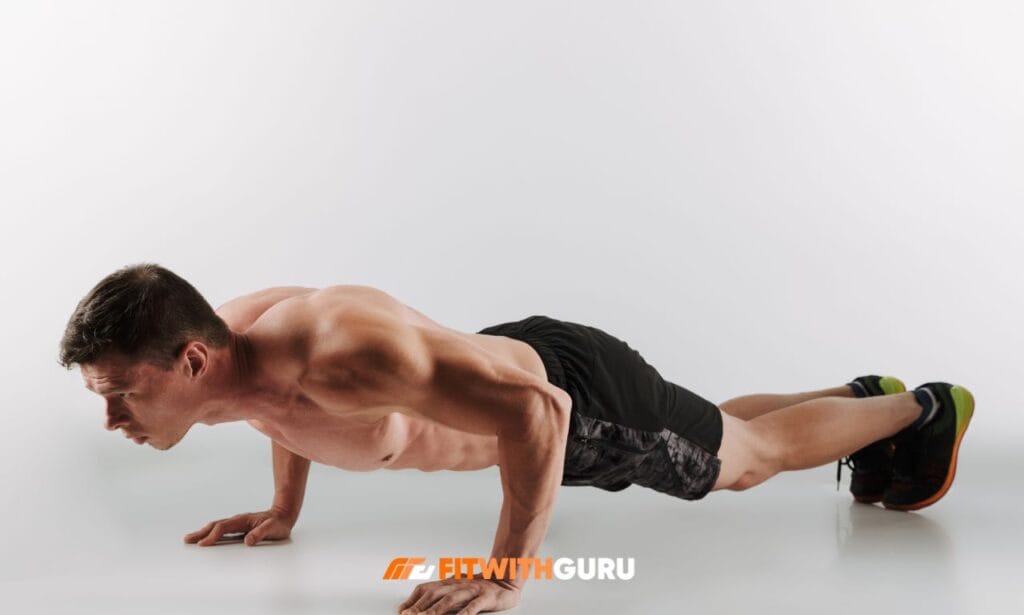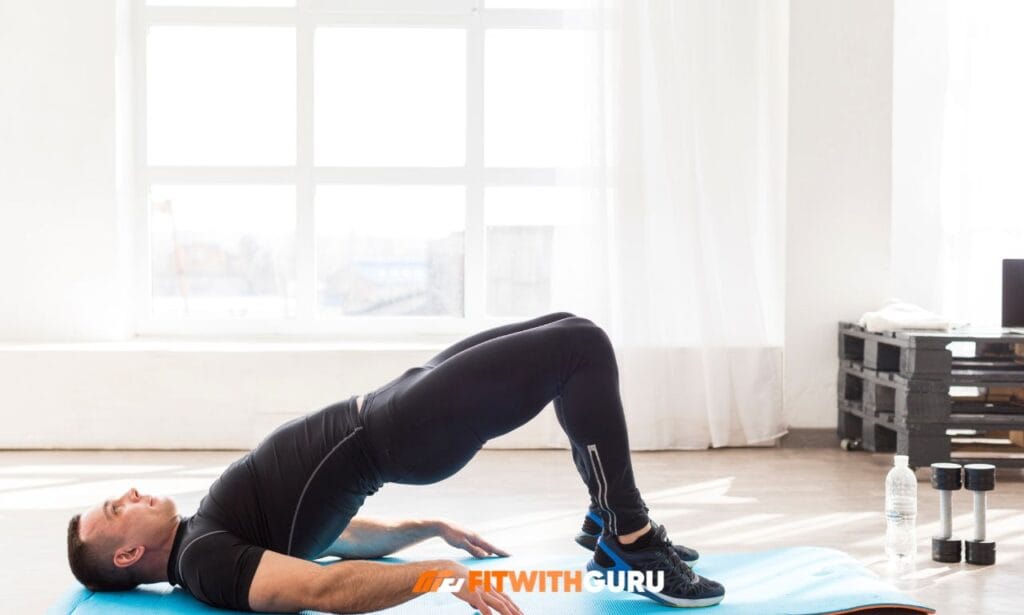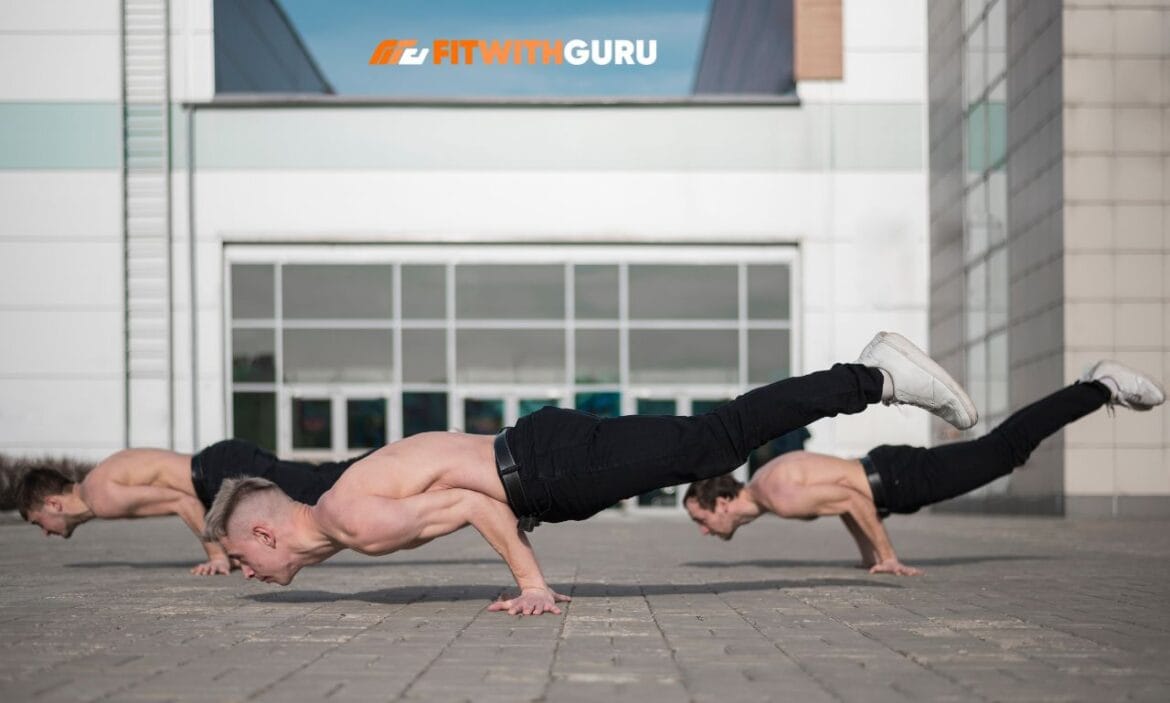Calisthenic upper body exercises are the most effective way to build strength and muscle definition using just your bodyweight. These movements require no equipment, can be performed anywhere, and deliver real results when done consistently. Let’s dive into the five essential exercises that will transform your upper body.
Why Calisthenics Works for Upper Body Development
A calisthenic upper body workout engages multiple muscle groups simultaneously, building functional strength that applies to everyday activities. Unlike isolated gym exercises, bodyweight movements create natural, coordinated muscle development across your chest, shoulders, back, and arms.
You can perform a calisthenics upper body exercises at home without spending money on equipment or memberships. Studies show bodyweight training produces comparable muscle growth to traditional weightlifting when performed with proper intensity and progression.
Exercise #1: Push-Ups for Chest and Triceps
Push-ups are the foundation of any calisthenic upper body exercises, no-equipment routine, targeting your chest, shoulders, and triceps in one movement. Place your hands slightly wider than shoulder-width, keep your body straight from head to heels, and lower your chest to the ground.

Push-Up Form Essentials
Your elbows should angle at 45 degrees from your body, not flaring out completely or hugging your sides. To keep your hips from sagging, maintain a firm core throughout the exercise. Take 2-3 seconds to lower down and explode back up with control.
Progression Options
Start with incline push-ups against a wall or bench if regular push-ups are too challenging. Once you can do 15-20 standard push-ups, try diamond push-ups for triceps or decline push-ups for increased difficulty. Advanced options include archer push-ups or one-arm push-up progressions.
Exercise #2: Pull-Ups for Back and Arms
Pull-ups build a powerful back and strong arms while improving grip strength. This vertical pulling movement balances your pushing exercises and creates the v-shaped back most people want. Hang from a bar with palms facing away, pull your shoulder blades down and back, then pull your chin above the bar.
Proper Pull-Up Technique
Start from a dead hang with fully extended arms. Pay attention to using your back muscles as well as your arms when pulling. Press back up after lowering until your upper arms are parallel to the floor. Lower yourself slowly over 3-4 seconds instead of dropping quickly.
Building Pull-Up Strength
If you can’t do a full pull-up yet, start with negative pull-ups where you jump to the top and lower slowly. Resistance band-assisted pull-ups help you practice the full movement with less resistance. Inverted rows at a lower bar build the pulling strength needed for pull-ups. Most people achieve their first pull-up within 4-8 weeks of consistent practice.
Exercise #3: Dips for Triceps and Lower Chest
Dips are exceptional for tricep development and lower chest growth. You can use parallel bars, sturdy chairs, or a kitchen counter for this exercise.
Dip Execution
Support your bodyweight with arms extended, shoulders down, and body upright. For triceps emphasis, keep your torso upright and elbows close to your body. For chest emphasis, lean forward slightly and let your elbows flare. Lower until your upper arms are parallel to the ground, then press back up.
Starting Safely
Begin with bench dips, keeping your feet on the ground with one elevated surface behind you. Progress to full dips once you can do 15-20 bench dips with control. Add weight or try ring dips once regular dips become easy.
Exercise #4: Pike Push-Ups for Shoulders
Pike push-ups specifically target your shoulders and prepare you for advanced movements like handstand push-ups. This upper body exercise bridges horizontal and vertical pressing in your calisthenics upper body workout plan.
Pike Push-Up Setup
Start in a downward dog position with your hips elevated, forming an inverted V. Place your hands slightly wider than your shoulders with your head between your arms. Lower your head toward the ground in front of your hands, not straight down. Press back up while maintaining the pike position.
Shoulder Development Progression
Elevate your feet on a box or bench to increase difficulty. Progress to wall-assisted pike push-ups with feet against a wall. Eventually work toward wall handstand push-ups for maximum shoulder challenge.
Exercise #5: Inverted Rows for Mid-Back
Inverted rows complete your upper body workout by targeting your mid-back, rear shoulders, and biceps. This horizontal pulling movement balances your pushing exercises and prevents muscle imbalances.
Row Technique
Use a bar at waist height or TRX straps for this exercise. Grip the bar, keep your body straight, and pull your chest to the bar. Retract your shoulder blades and point your elbows back at 45 degrees. Lower with control and fully extend your arms at the bottom.

Adjusting Difficulty
Raise the bar higher to make the exercise easier for beginners. Lower the bar to increase resistance as you get stronger. Try single-arm rows or archer rows for advanced variations.
Building Your Calisthenics Upper Body Workout Plan
A three-day weekly schedule provides enough stimulus for growth with adequate recovery.
Sample Weekly Schedule
Monday: Push Focus
- Push-Ups: 4 sets of 12-15 reps
- Pike Push-Ups: 3 sets of 8-12 reps
- Dips: 3 sets of 10-15 reps
Wednesday: Pull Focus
- Pull-Ups: 4 sets of 6-10 reps
- Inverted Rows: 3 sets of 12-15 reps
- Negative Pull-Ups: 2 sets of 5 reps
Friday: Full Upper Body
- Push-Ups: 3 sets of 15 reps
- Pull-Ups: 3 sets of 8 reps
- Dips: 3 sets of 12 reps
- Inverted Rows: 3 sets of 12 reps
- Pike Push-Ups: 2 sets of 10 reps
Rest 90-180 seconds between sets and increase difficulty every 2-4 weeks.
Progressive Overload Strategies
Unlike weightlifting, calisthenics requires creative approaches to progressive overload. Increase your repetitions each week—if you did 10 push-ups last week, aim for 11-12 this week. Decrease rest periods between sets to increase intensity without changing exercises. Progress to harder variations like moving from regular push-ups to archer push-ups.
Tracking Progress
Keep a workout journal recording exercises, sets, reps, and rest periods. Take weekly progress photos to track visual changes. Test your maximum reps every 4-6 weeks to measure strength improvements objectively.
Avoiding Common Training Mistakes
Rushing through reps reduces muscle tension and wastes your training time. Skipping warm-ups increases injury risk, especially for shoulder-intensive movements. Training through sharp pain signals injury, which is different from normal muscle discomfort. Neglecting rest prevents muscle growth since adaptation happens during recovery, not during workouts.
Form First Always
Perfect form with fewer reps builds more strength than sloppy high-rep sets. Record your sets to catch form breakdowns you can’t feel during the exercise. Stop when you can’t maintain proper form—half-reps don’t count toward progress.
Frequently Asked Questions
How long until I see results from calisthenic upper body exercises?
You’ll notice increased strength within 2-3 weeks of consistent training. Visible muscle definition typically appears after 6-8 weeks. Beginners see faster initial progress than advanced athletes. Consistency matters more than perfection—three imperfect weekly workouts beat zero perfect ones.
Can I build significant muscle with calisthenic upper body workout no equipment?
Yes, gymnasts prove you can develop exceptional musculature using primarily bodyweight training. The key is progressive overload through increasingly difficult variations, not adding external weight. Once you can do 20+ push-ups easily, transition to harder variations like one-arm progressions. Eat adequate protein (1.6-2.2g per kilogram bodyweight) and sufficient calories alongside training.
How often should I do a calisthenics upper body workout at home?
Three to four sessions weekly provides optimal stimulus with adequate recovery. Space workouts with at least one rest day between sessions to prevent overtraining. Advanced athletes might train more frequently using push/pull splits, but beginners should start conservatively. Persistent soreness, decreased performance, or lack of motivation signal inadequate recovery.
What’s the best warm-up before upper body exercises?
Start with 5-10 minutes of light cardio like jumping jacks to elevate your heart rate. Do dynamic stretches including arm circles, shoulder rotations, and torso twists. Perform easier variations of your planned exercises before starting your working sets. Gradually increase intensity across 2-3 warm-up sets.
Can calisthenics replace weight training entirely?
For most fitness goals including muscle building and strength development, calisthenics provides everything you need. Bodyweight training excels at building relative strength and functional movement patterns. Traditional weightlifting might offer advantages for maximum absolute strength or specific muscle isolation. Many athletes combine both methods for variety and comprehensive development.
Conclusion
Calisthenic upper body exercises provide a complete training system for building strength and muscle without equipment or gym memberships. The five movements—push-ups, pull-ups, dips, pike push-ups, and inverted rows—develop all major upper body muscle groups when done consistently.
Start with appropriate progressions for your fitness level and gradually increase difficulty over time. Consistency beats perfection, so focus on showing up regularly and maintaining proper form. Your calisthenics upper body workout plan should evolve as your abilities improve, introducing new challenges that keep training engaging. Whether training at home, in a park, or while traveling, these bodyweight movements let you build your physique anywhere.

